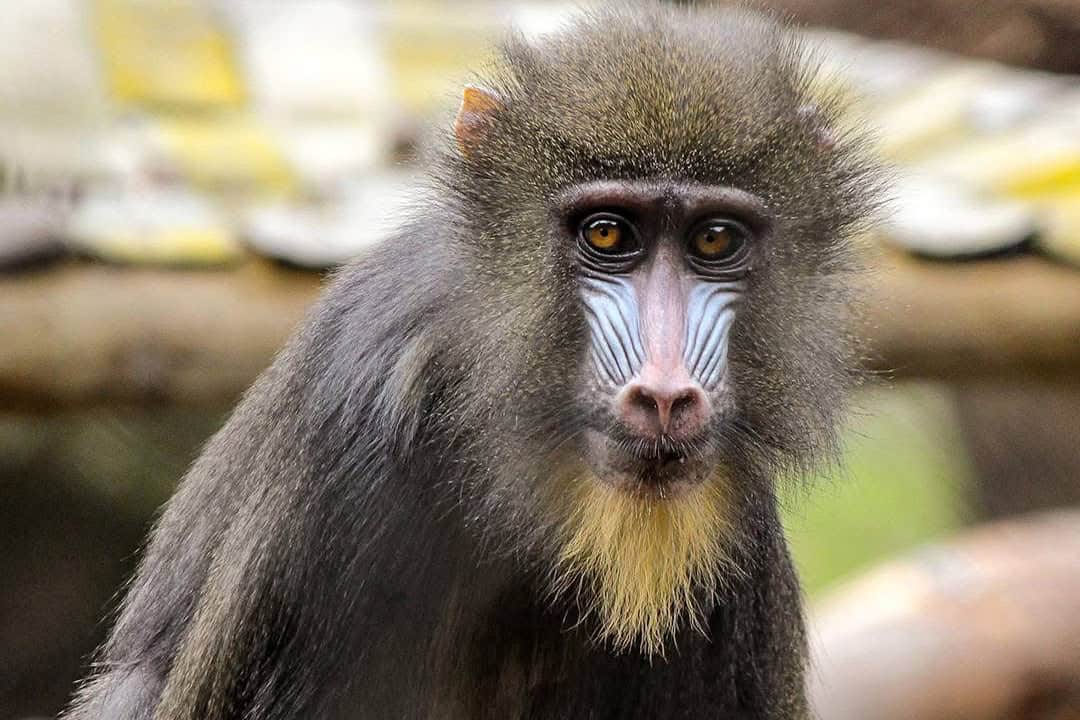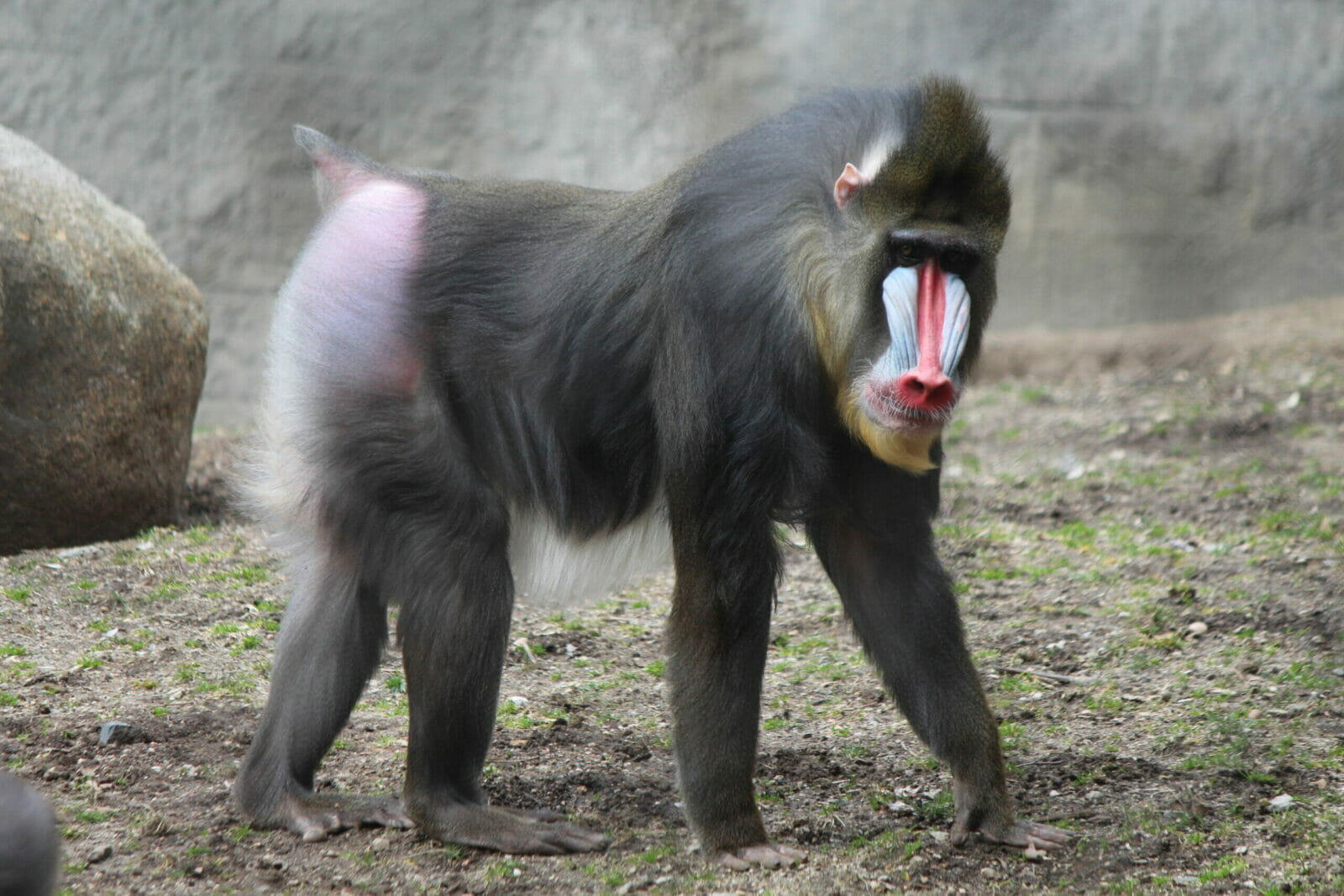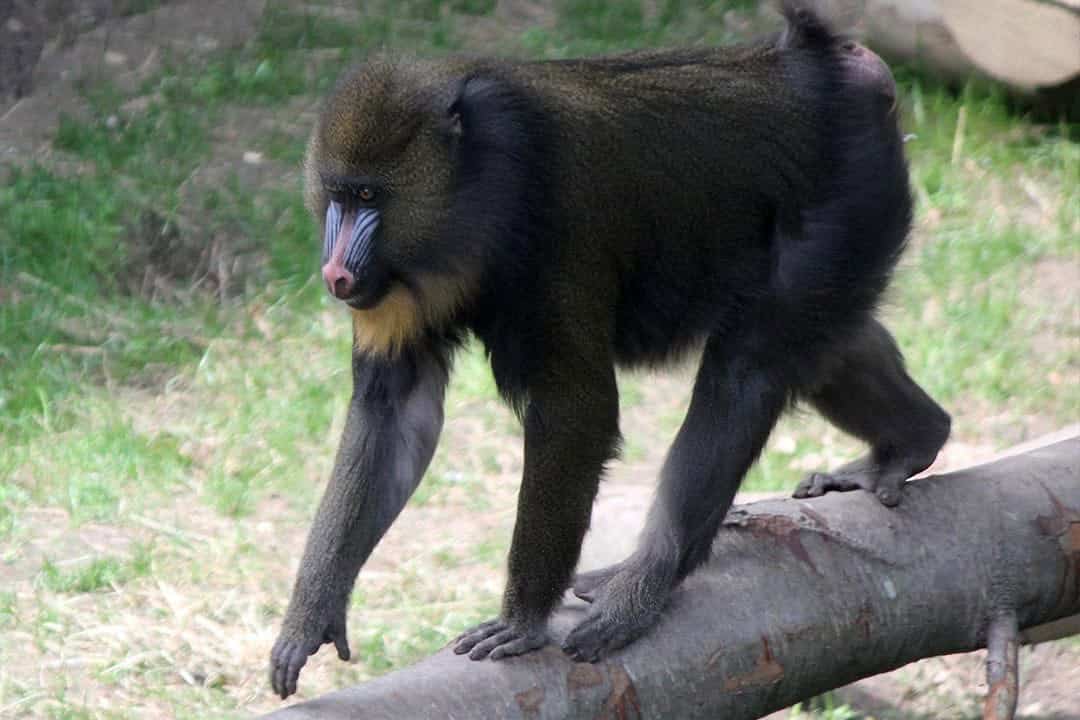Mandrill
Mandrillus Sphinx
Class: Mammalia Order: Primates Family: Cercopithecidae
Size
Weight (Males): 25-30 lbs
Weight (Females): 55-77 lbs
Lifespan
25-30 years
Diet
Mandrills are omnivores and have a varied diet. They feed on fruit, leaves, roots, seeds, invertebrates, eggs, and small reptiles and amphibians.
Habitat & Range
Rainforest and savannah of southern Cameroon, Gabon, Guinea, and Congo.
Interesting Facts
Mandrills are the largest of all monkeys.
Male and female mandrills are sexually dimorphic, meaning they have different physical characteristics. Males are taller and heavier, have longer canine teeth, and are easily identified by their brightly colored faces and rears.
Mandrills live in social groups called troops or hordes. Troops can consist of just a few individuals or as many as 50 mandrills. Occasionally, males will live on their own and only join a horde during the breeding season.
These monkeys communicate is a variety of ways including facial expressions and nonverbal gestures. A mandrill that exposes its teeth through slightly lifted lips is showing a sign of friendliness. If a mandrill shakes its head and shoulders it is a sign of playfulness. If a mandrill is slaps the ground it is showing anger and aggression.



Conservation Status
Vulnerable
Threats
Mandrills are greatly threatened by deforestation and loss of habitat. Another major threat to this species is hunting; mandrills are frequently hunted as bushmeat.
